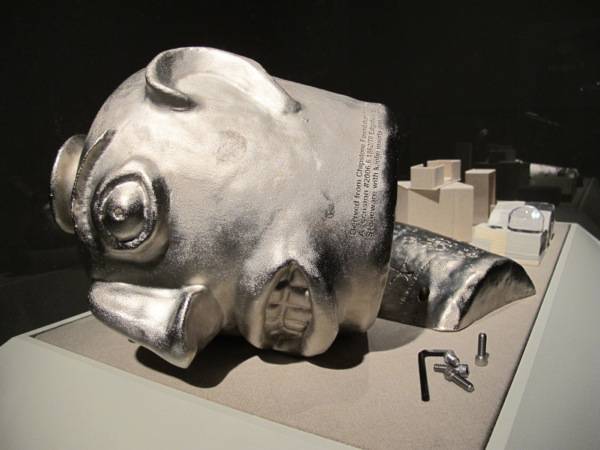Rapid Ready Roundup: Arcam, Standards, Face Jugs and CES

Of Ghosts and Speculation. A reproduction of a slave-made face jug using AM. Courtesy of the Milwaukee Art Museum.
Latest News
January 3, 2013
In the course of my diligent efforts to keep you good people up to date on the state of additive manufacturing (AM), I come across many interesting news items. I’ll gather them up every so often and present them in a Rapid Ready Roundup (like this one). You can find the last Roundup here.
Let’s start today’s Roundup with a quick look at the aerospace industry and AM. Arcam has reported a deal with Italian aerospace component manufacturer Avio for the delivery of six new electron beam melting systems. The deal, worth more than $46 million, will result in a new facility focused on creating titanium aluminide parts using AM.
“Our goal is to have products in production in the aerospace industry by 2014. With this order, it becomes clear that the goal is within reach,” said Magnus René, CEO of Arcam. “With this order, we have so far in 2012 received 24 new machine orders and we are entering 2013 with a solid order backlog.”
Moving on, the European parliament is backing a new standards project, called SASUM. Assisted by CEN, the European committee for standardization, SASUM will begin with two open events where the details of standardization are identified. The first meeting will take place on March 13. From the press release:
The SASAM project is very important, as the rapid evolution of Rapid Prototyping and Additive Manufacturing has overtaken the standardization work and their protocols. Accordingly, no objective comparable information is available for any products manufactured either by Additive Manufacturing or Rapid Prototyping. Additionally, its relationship with other over-regulated industries that use conventional processes makes it difficult for Additive Manufacturing to comply with and enter into fair competence with these conventional manufacturing techniques.
Next, to most people, the words “face jug” sounds like I’m just making things up. A face jug is a type of African-American pottery that was created in the second half of the 19th century, in the midst of slavery, in the Edgefield District of South Carolina. As part of the new exhibit, Face Jugs: Art and Ritual in 19th-Century South Carolina, at the Birmingham Museum of Art, several face jugs were recreated using AM.
An original face jug was 3D scanned, and the data used to create a basic model. From there, designers used Geomagic’s Freeform software and its Phantom haptic input device to construct a larger scale reproduction of the original in digital form. Last, the design was 3D printed, then nickel-plated for durability. The project involved team members in different parts of the U.S., but the advantages of digital design and manufacturing allowed them to combine their talents without ever actually meeting in person.
Last, most of you probably already know the 2013 CES will be getting under way in Las Vegas, from January 8 – 11. 3D printing will be on display, with manufacturers like 3D Systems, Stratasys and MakerBot on hand to discuss the technology. Rapid Ready and Desktop Engineering will be monitoring the festivities and bringing the results to you.
Below you’ll find a short video about the process that went into the reproduction of the face jug.
Sources: Birmingham Museum of Art, Metal Powder Report, Melodika, TCD
Subscribe to our FREE magazine, FREE email newsletters or both!
Latest News
About the Author
John NewmanJohn Newman is a Digital Engineering contributor who focuses on 3D printing. Contact him via [email protected] and read his posts on Rapid Ready Technology.
Follow DE






